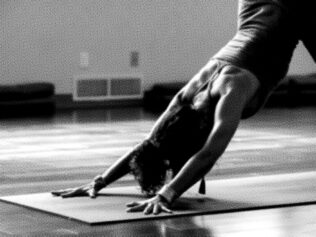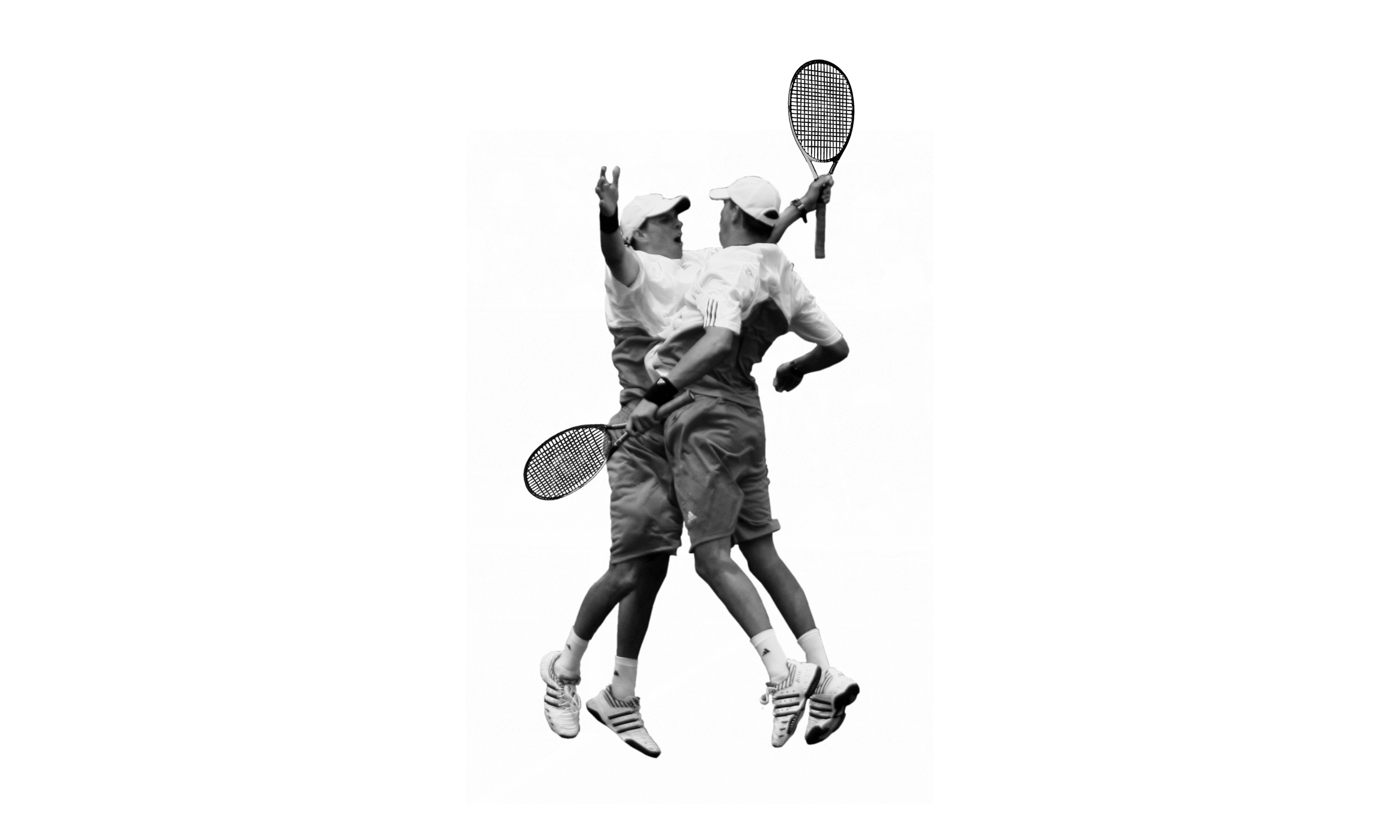
Use of performance-enhancing substances (otherwise known as doping) doesn’t only take place during the Olympics. Disabled sportspeople also fall prey to the temptation of using dishonest means to improve their results. Andrzej Kula talks with Professor Bartosz Molik, Dean of the Faculty of Rehabilitation at the Józef Piłsudski University of Physical Education in Warsaw, who also coaches the Polish wheelchair basketball team.
Andrzej Kula: I would like to talk about cheating at the Paralympic Games…
Bartosz Molik: Cheating is a reality anywhere we go. In football, in athletics, at the Olympics, and also the Paralympics. The very fact that disabled sportspeople cheat is enough to cause a sensation, because they are often treated as poor angelic souls needing to be stroked and led by the hand. I have always said that Paralympians are no different to their non-disabled counterparts, it’s just that they have limited physical abilities. They have problems seeing, hearing, or else moving about. Nothing, however, can stop them from trying to beat the system by cheating and using substances. In terms of mentality, they are just as competitive as anyone else. They expect to hear criticism if they fail to reach their best, and they want to be treated like stars if they succeed. It is the same when it comes to breaches of rules and guidelines – those who bend or break rules at the Paralympics are no different to those at the Olympics. The majority of those involved are honest, but the minority is the same as in the non-disabled world.
One of the biggest scandals at the 2000 Summer Paralympics in Sydney was the basketball gold medal won by the Spanish team – it later turned out that some of those competing in the Games were faking neurodevelopmental disabilities.
A journalist who had presented himself as an intellectually disabled person went to the Games and then reported everything afterwards. This case caused the International Paralympic Committee (IPC) to exclude disciplines involving this particular disability from future Games – they only returned in London 2012. Today competitors not only undergo tests for intellectual performance, but also have to solve psychological tests which are impossible to cheat on.
And what about those sports in which physically disabled people compete?
Whereas in the Olympics we tend to find pharmaceutical forms of doping, in the Paralympics the same is true of so-called ‘boosting’ and technological enhancements.
Boosting tends to happen in endurance sports and team games (such as wheelchair rugby), and is used by competitors with spinal cord injuries. As a result of their damaged central nervous systems, their organisms function less well during periods of physical effort. They tend not to sweat at all, and have a much lower pulse rate at a maximum of 120 bpm, whereas for others this would be up to 200-220. Doping involves mechanical means of increasing the activity within the central nervous system. In extreme cases, they will break a toe or tighten their bladder, meaning they can be hit with real force. Remember that we’re talking about sportspeople who have no feeling from the chest down – breaking a toe causes them no pain.
The problem with boosting is that unlike pharmaceutical doping we are unable to perform tests to prove that it has been used. Anyone is able to claim that they “hit their knee on a wardrobe or a table edge”, or else injured their toe. The IPC tried to battle this phenomenon using methods such as testing the participants’ blood pressure levels. This did not work, and even now there are no means of gathering evidence that could lead to disqualification. We aren’t even able to say how prevalent this form of cheating might be. The competitors themselves admit that their opposition makes use of boosting techniques.
And technological doping?
We call it doping, though sportspeople might use it unconsciously. The pace of technological progress is very dynamic, and every competitor uses all the means at their disposal to achieve the best possible result. This is why they use better prosthetics and don’t know if by choosing a given model they are starting to break the rules.
So sports authorities are unable to at all regulate which prosthetics are outlawed?
The main criteria used today is the length of prosthetics, which should be proportional to the user’s height. During the 2012 Paralympics, Oscar Pistorius ran on two prosthetic limbs and accused Alan Fontelles, his competitor in the 200m race, of achieving his shock win using technological doping. This is the same Pistorius who a few years earlier had to defend himself against accusations of using prosthetics that gave him an unfair advantage. Later on, he apologized for his protests, but these accusations meant that he was essentially excluded by the Paralympic community.
I belong to the classifying committee of the International Wheelchair Basketball Federation, but I am also a physiotherapist. When I see new sorts of prosthetics, I consider them to be wonderful things. They do not wreck people’s health. Take, for example, the case of the German Markus Rehm, who is able to long jump further than the best competitors in the Olympics. This is proof that the right sort of equipment can help improve health and results. In turn, Richard Whitehead, someone I often tell my students about, had his legs amputated at thigh level. He runs using prosthetics and beats sportsmen who have one healthy leg and the other amputated just above knee level. In sporting terms, this is a clear case of technological doping – inherently unfair – though Whitehead is not in any way guilty of doing anything other than using all the means at his disposal. Classification procedures are to blame in fact…
…because at the Paralympics, sportspeople are categorized according to classes. In the 100m race, there are 16 sets of medals for the men and 14 for the women. Then there are separate classes for those with eyesight disabilities (three classes), brain injuries (seven), amputees (five), etc.
And this method of classification just can’t keep up with technological changes. Whitehead was told to compete in a given category, which is all he did when he won. We can’t call him a cheat, even though he uses technological enhancements. However, in terms of his health, his history shows that a patient can function well with both knees missing. Patients with double amputations tend to put on prosthetics and support themselves on elbow crutches. They find it hard to function standing up, often moving about in wheelchairs, while Whitehead is able to both run and jump without the use of either crutches or walking sticks. A real achievement. I see the same thing when I look at technological doping among professional cyclists – those who attach small engines to their machines. In sporting terms this is cheating, but in terms of recreation it’s a real boon for the elderly, or those with lower fitness levels. In this way, technological advances are able to improve people’s quality of life.
Last year, the BBC announced that swimmers with brain injuries spend time sitting in icy waters to increase their levels of spasticity (by which we mean the abnormal tightening of the muscles). Those who have had amputations undergo more operations, and the increased reduction in limb lengths allows them to start in different categories and classes. There are also those who strap their arms down for a few days before meeting the qualifying committee in order to be unable to extend their arms.
In official terms, such incidents do not happen. Information does, however, come out into the light of day that there are nationals competing who have changed the length of their remaining limbs for (un)sporting reasons. And yet these are more suspicions than proven facts.
How are Paralympian cheats punished?
Those who cheat during qualifying are disqualified for up to two years – the same penalty as for pharmaceutical doping in all Olympic sports. The second time anyone is caught results in a lifetime ban. I once asked Polish coaches taken from a range of disciplines if they had heard of anyone penalized under these terms. None of them had.
In fact, disqualification is impossible. Let’s assume that a basketball player tries to lie to me. I ask them to lift an upper limb and they say that they can’t, only to then lift it up during a match. If I was to try to disqualify them, they would then complain that they didn’t understand my request, or that they were feeling ill that day, or that the weather was foul, and so on. Those with brain injuries, muscular dystrophy and other neurological disorders react badly to stress, temperature, the time of day and such, hence they can claim to have been unnerved or too cold to respond aptly. There is no objective way to prove that a competitor is cheating.
I know of wheelchair basketball players trying to cheat during tests, so as to end up in a category for more disabled players. This is why we make our decisions only once we have seen them in action, during competitive play.
Do athletes ever complain because they have been assigned to a class in which they will find it too easy to win?
Once someone asked me for help. I will not reveal the name or the sport, but it was someone with a sight impairment who was suddenly classified as completely blind. He felt very bad about this, thinking his chances of winning were too high as a result. In other words, he didn’t want to compete in a class where he would have an unfair advantage. I wrote a letter to his federation, explaining everything, but I heard that nothing could be done until further tests were performed. And these tests were not planned for another year to come. Everything was taking place just before the world championships, so this competitor refused to go, explaining that he felt uncomfortable risking a win in such circumstances.
Do you have any ideas as to how an optimal means of classifying Paralympian sportspeople might work?
For years, the system in place was based on what was called ‘expert analysis’. This stemmed from the idea that professionals could use their experiences to decide how many classes the competitors should be divided into. There was no science behind any of this. Yet for the past decade, the IPC has been using classifications based on scientific proof and trying to ensure that all disciplines base their findings upon these. But the effects are meagre, seeing as such methods require both time and money.
And so the ruling bodies in each discipline can agree on their own class categories according to their own say so?
The rules governing class divisions are decided by the ruling bodies in each discipline and apply universally across the world – all basketball, volleyball, rugby players, and so on. The problems begin elsewhere. Those with both lower limbs amputated, such as Pistorius, used to compete in wheelchairs. Yet when Pistorius got his prosthetics and began to run, he had to be moved to a different class, seeing as wheelchair users don’t compete against those who can run. This is when those responsible for selecting classifications got confused, and added him to a class of competitors with just the one amputated limb. Doubts emerged over whether Pistorius was able to compete, yet the ruling body decided he was going to manage somehow. Out on the running track, it turned out that he was the best. The IPC didn’t verify what sort of influence his prosthetics might have had on his results, nor did it consider whether it might be responsible for sanctioning the use of technological doping. Hence the confusion, affecting mostly the athletics disciplines, along with cycling and cross-country skiing. When it comes to wheelchair sports, the problem is almost non-existent, since the rule book precisely specifies how wheelchairs should be constructed and used. Prosthetics are a different matter with lots of grey areas, especially seeing as they can amplify the competitors’ energy output as they move along, applying force to the ground.
But, if we now consider the Olympics, the sprinter from Tuvalu also didn’t compete in the same shoes as Usain Bolt.
The shape of the prosthetics used by competitors today is something I saw as far back as the 1990s. It seemed unfair that the two Americans using these new designs were ahead of the rest of the pack, who were still using the old prosthetics. That was when technological doping was first mentioned; the proof was in the difference in the shape of the artificial limbs. Today most people use the same sort of prosthetic, only the materials used in their construction differ.
Part of the problem is that the IPC is trying to limit the number of disciplines and competitions, so that the games are as attractive as possible to the public. There are many classes – as we have already said – in swimming and athletics, and so the IPC is trying to combine some, which only complicates things. Competitors are moved to categories with sportspeople who have much better or worse results, which invites questions regarding the fairness of such contests.
It’s impossible to answer the question as to whether reducing the number of classes is a good thing. The situation from the 1980s, when 34 classes were assigned to just the one competition, was certainly ineffective. There were classes with only three or four people competing in them, the level of rivalry desperately low. Research showed that disciplines such as the shot put had results that were very similar for competitors from different classes, meaning that they could be combined. Today there are some 10-11 classes for the most popular categories. This was the right direction to move towards, the only question being whether we’ve gone too far. We’ve ended up with a scenario where those with four inactive limbs are competing against those with only two. The linking of classes is tied into sponsorship demands, because the ruling bodies want the Paralympics to draw crowds.
Another element shared with the Olympics is that sponsors and television stations make the key decisions, while the large number of classes makes it harder to watch the Paralympics.
The realities are the same, something the Brits dealt with best. In the London 2012 Paralympics, none of the Brits worried about what classes people were starting in. All that mattered was that the hosts’ athletes won gold.
So we might ask the question of whether the Paralympics are about collecting a sack full of medals, or helping make disabled people more active?
The coach Hans Lorenzen listed 10 aims related to sports for disabled people; one of these is to do with ‘propaganda/politics’. I used to laugh at him, but now I think he has a point. When we take part in the Paralympics, we try to promote our countries, showing off our systems of social welfare and how we care for disabled people. Great Britain does this very effectively, promoting elite sports that are meant to be a calling card for their country. Scandinavian countries, in turn, invest more in recreation and popular sports. Qualified sports for elites are only an add-on. Ukraine is very different too. 15 years ago, there were only a handful of competitors from Ukraine at the Paralympics. Soon enough, a member of parliament invested in sports schools for disabled people. They didn’t focus on the most audience friendly and expensive disciplines, but those that would bring them the most medals. They invested in training athletes and swimmers – the two disciplines with the greatest number of potential medals during the Paralympics. As a result, they won 117 medals at Rio 2016, securing third place in the overall rankings, just behind Great Britain (147) and China (239). Poland came home from Brazil with 39 medals.
Parts of this interview have been edited and condensed for clarity and brevity.
Translated by Marek Kazmierski









